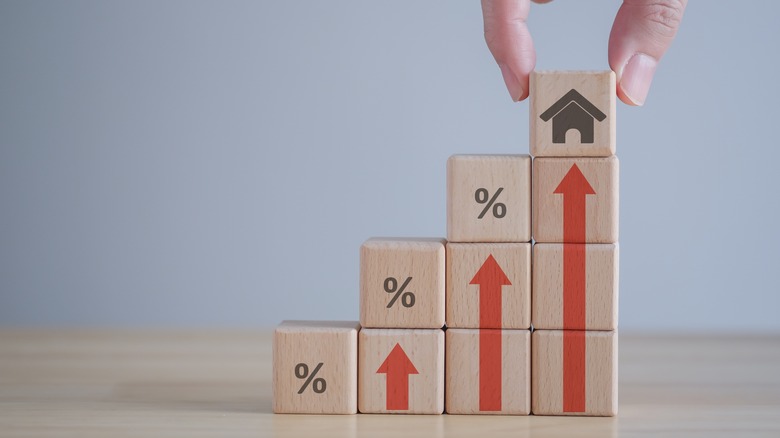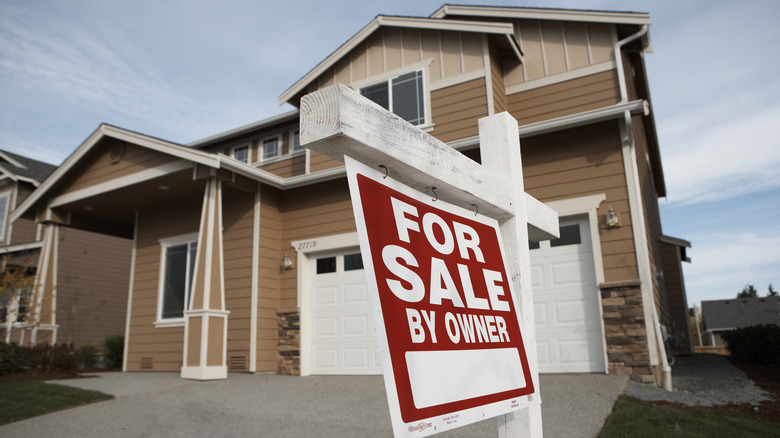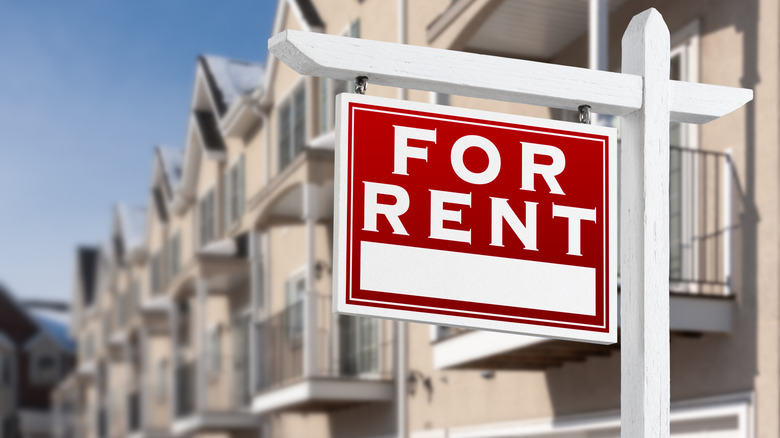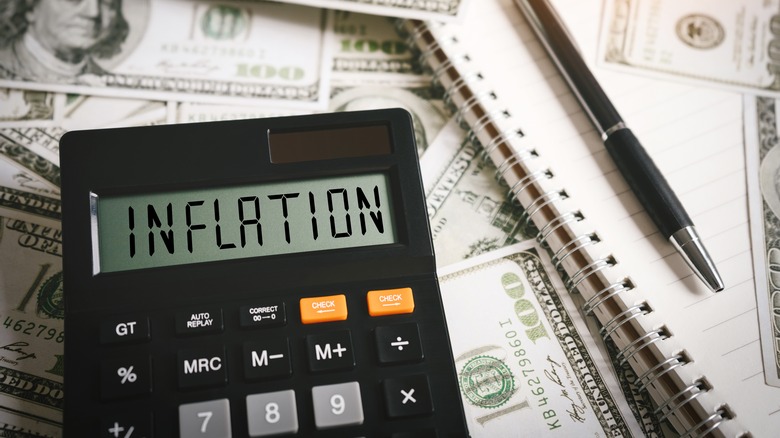Major Trends In The 2022 Real Estate Market, According To An Expert
The real estate market has taken some wild turns over the last few years. From a booming marketplace during the height of the COVID-19 pandemic to a middling pace in the final months of 2022, real estate has certainly experienced a spectrum of conditions.
In an exclusive interview with House Digest, Jon Sanborn, co-founder of Brotherly Love Real Estate in Philadelphia, provides some clarity on the most pertinent property market trends of 2022. He explains, "2022 saw the residential real estate market take a downturn from the highs of 2021." CNBC agrees, noting that mortgage applications plummeted at the end of 2022 and that refinancing demand was down 87% compared to the same period a year prior. Sanborn continues, "The escalating interest rates (up to 7%) was the frontrunner in this downward trend, but house prices still rose to record levels. The median U.S. home price hit a record high ($388,100, +1.2% YoY) before slightly falling. Renters' budgets were stretched thin due to the high rents, and to top it all off, the inflation rate increased the overall pressure."
The current market offers some interesting opportunities for both buyers and sellers, but there remain many conditions that are perilous and may stifle mobility for those on both ends of the transaction.
All time high house prices
One of the most obvious trends that took root in 2022 was the face value of homes hitting the market. House prices rose substantially over the course of the year. According to Sanborn, "In March 2022, the median home sale price rose by around 17% YoY, making it the largest percentage increase in the last five years. By May, a typical house sold for around $430,550. All through the pandemic, the demand soared but inventory remained low."
Housing prices have continued to balloon since 2019, and the real estate space has been a distinct seller's market for much of this time. However, the reality of low inventory could threaten sellers moving forward. Many sellers have high hopes for the profits of their real estate sale, and with historic heights in pricing, some have pegged their list price too high. It's good to think big with these types of sales, but keeping a grounded sensibility is crucial to finalizing a deal and taking your financial mobility to another property that better suits your needs. Standing firm on an inflated asking price that you think is concurrent with the market is possible during certain phases of a real estate market's cycle, but with low inventory and high interest rates dominating the space, buyers are reluctant to pull the trigger on a home that doesn't totally match with their needs and sports a heightened price tag.
Increased rents
Bad news for buyers and renters was the norm in 2022. "Rents in 2022 were 13% higher than in 2021. Following the pandemic, rents soared due to the rise in demand and lack of supply. This effect is just now balancing out," says Sanborn.
Many renters were forced to remain in homes they didn't particularly like or had outgrown. Similarly, with new contract renewals, some renters faced steep rent hikes imposed by their landlords but couldn't justify a move to something cheaper because there simply wasn't anything like this available in many parts of the country. Sanborn explains, "New York City retained its spot as the most expensive city for renters, with rents going up from $4,000 in 2022. Surprisingly, smaller cities that have previously offered affordable rents also witnessed a surge including Pittsburgh (15%) and Oklahoma (22%). California also turned out to be one of the most expensive metros for renters in 2022 with rents in Los Angeles, San Francisco, and San Jose going up more than $3,500."
Rising inflation
Inflation across the country was one of the biggest economic stories of 2022. It placed a stranglehold on the stock market and severely impacted real estate sales as well. "The sudden rise in inflation limited the consumer spending and bottlenecked every facet of the residential market in the U.S. The ripple effect increased the 30-year mortgage rate to around 7%, making housing unaffordable for more than half of the American population," Sanborn says. Inflation boosts the total cost of everyday items like apples or toilet paper, but it also makes purchasing a larger investment — like a house — a very different transaction than it would otherwise be. Using a mortgage calculator, the toll that a rising interest rate takes on a buyer's monthly finances becomes clear (via Bankrate).
On a 30-year mortgage with a 7% interest rate, a median cost of $388,100, and an average 6% down payment, a buyer would be looking at a total monthly mortgage repayment of $2,748. Slice the interest rate in half and bring it back down toward pre-inflation levels: The monthly cost drops by about $800. This substantial weight added to a borrower's monthly cash flow can make or break an opportunity to become a homeowner.
A decline in home sales
Finally, Sanborn notes a marked drop in completed transactions within the real estate market. "Year-over-year home sales decreased in each passing month of 2022, with the fourth quarter witnessing the worst decline. Around 375,000 homes were sold in November, a number that was down 35% YoY," he says.
"Other trends from 2022 showcased drop in around 15% of active listings, bidding wars, and all-cash offers." These changes in the marketplace signal a weakening position for sellers and a potential surge in buying power on the other end of these transactions. Interest rates, heading into 2023, have hinted at a break in the fever, although the national debt concerns gripping Washington at the start of the year will continue to impact this positive momentum. If the tide is turning, 2022 may not have been a great year for anyone participating in the real estate space, but 2023 may provide a glimmer of hope, especially for those in the market for a new place to call their own.




